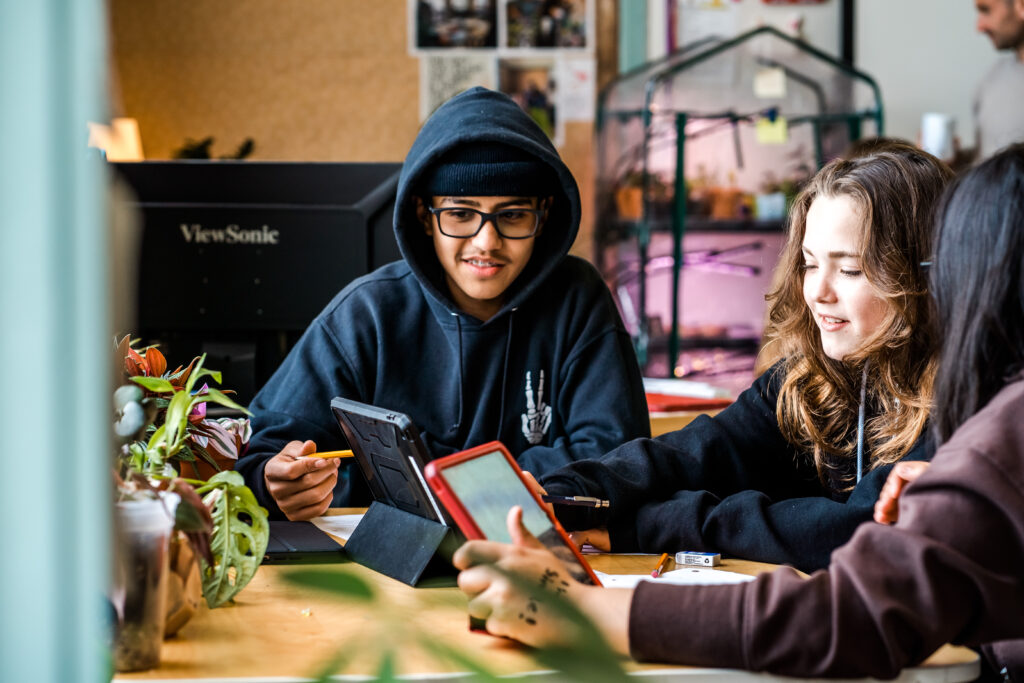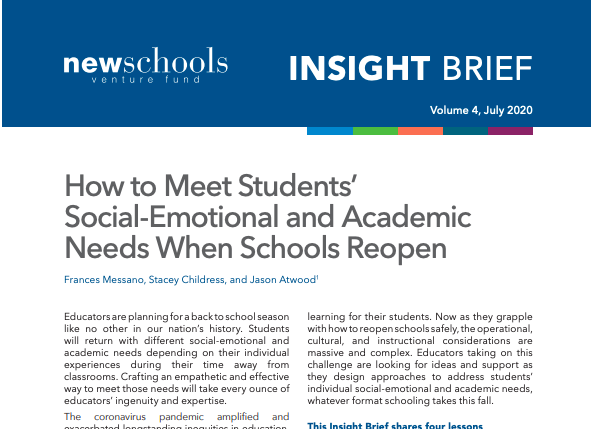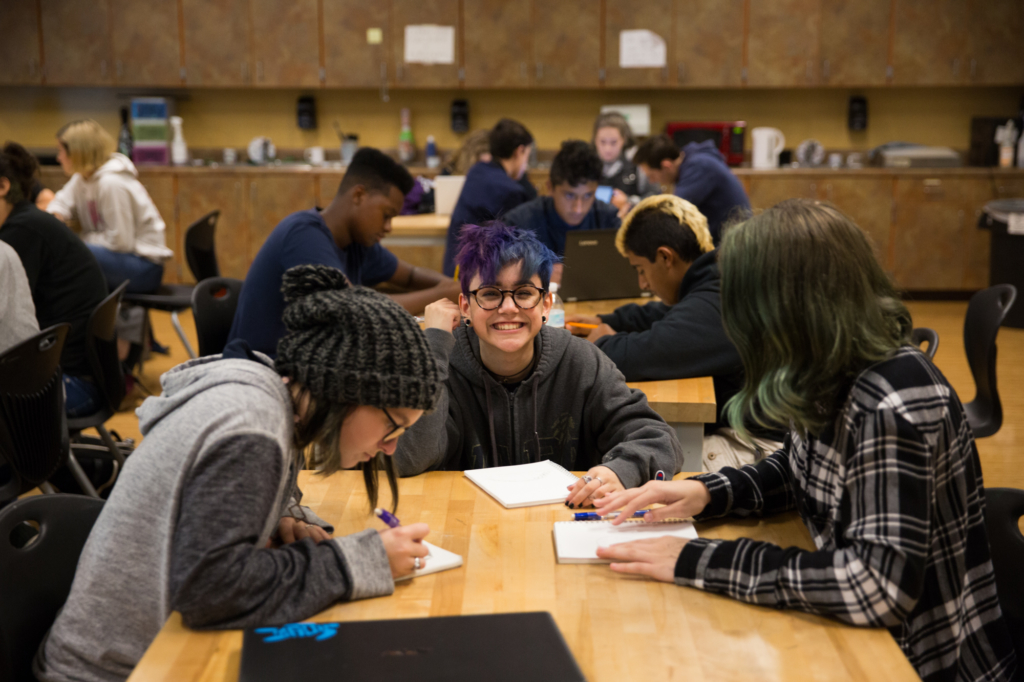By Leo Bialis-White, Senior Associate Partner, NewSchools Venture Fund

One hundred and eighty days per year. Six and a half hours per day.
For decades, the lines separating in-school and out-of-school time have been clear and immutable. Families, schools, after-school providers, and unions built everything around this static structure. Now, COVID-19 is radically changing the needs of students and when they learn.
As schools plan for the fall, they should seize this once-in-a-century moment to think differently about time so that students can master core academic content and grow socially and emotionally.
Even before COVID-19, many leaders made a clarion call for rethinking school time, because it was not always working for families and students. In a 2015 report from the National Center for Time and Learning, David Farbman said, “a preponderance of evidence points to the powerful association between more time in school (both generally and spent in specific activities) and better outcomes for students, especially for those who otherwise lack productive learning outside school.” Catherine Cushinberry shared a similar acknowledgment in 2016. Despite compelling logic behind new proposals, schools have remained largely unchanged due to deeply ingrained notions about schooling and the complex systems that would have to be changed to realize them.
However, it’s different now, so let’s briefly examine two ways school leaders might rethink school time — expansion and reconfiguration.
Expand Time
Schools can address increased academic and social-emotional needs by adding more time in their school years, weeks, and days for learning. Expanding time acknowledges that students are missing significant academic and social-emotional opportunities during shelter-in-place, and many experienced a lack of support pre-COVID-19.
How might schools build a longer school year? In a recent report, Chiefs for Change synthesize the research for extended, year-round schools. They point to international examples where students attend school for 190–200 days per year. In their words, “Year-round school has the potential to produce not only academic benefits for students but logistical and financial benefits for families.” Extending the school day as some districts are considering might also yield these benefits.
How can schools take advantage of new pockets of time during the week? By understanding the new schedules, needs, and rhythms of their families, schools can uncover different timeframes that can embed academic and social-emotional content. Several schools are thinking anew about after-dinner time with families to strengthen relationships and add academic enrichment. For example, Rocketship Public Schools posts optional bedtime stories for students; books are read by school operations staff, who wouldn’t otherwise get facetime with students during shelter-in-place. And ST Math supports schools to offer family math nights to provide both family connections and an engaging way to access mathematical content. Both offer meaningful engagement without taxing teachers further.
However, this does not mean that schooling must usurp all students’ time. Nor does it mean that it comes at the cost of family time and teachers’ capacity. Instead, there are clear avenues and precedent for schools to enrich students’ experiences beyond the traditional instructional venues, within what is feasible for families, and using content that is well-designed for learning and relationship-building.
Reconfigure Time
Beyond adding time, there may be even more potential for student benefit by reconfiguring the time that schools currently have. Although worrisome gaps in technology and internet access persist, technology has made learning anything anywhere a reality for most students. In the same way that station rotation models can effectively allocate a teacher’s time and allow students to engage in varying learning experiences at the same time, schools might reconfigure the existing time to limit exposure to the coronavirus and maximize in-person time.
First, schools should consider how to unbundle the elements of learning. That is, insofar as it is student-centered, schools should explore opportunities to disaggregate teaching, practice, and assessment. The flipped classroom is the most well-known example. Now, teachers have even more resources to create lessons that students can learn at any time. For instance, CommonLit shares how to turn lessons into a video lesson. As such, teachers, students, and families have more flexibility regarding when learning happens. This has profound opportunities for students and teachers. Teaching and learning is typically a synchronous experience, but making it asynchronous provides much-needed flexibility for teachers, parents, and students. Also, there can be deepened learning, as the research on distributed practice suggests.
More provocatively, Michael Petrilli of The Fordham Institute pushes schools to ask, “Why can’t our high schools look more like college?” And Andy Rotherham of Bellwether Education Partners proposes a reconceptualization of the entire senior year. These options are less feasible for the fall, but the more significant point is that reconfiguration, especially at this moment, is ripe with possibility.
Scheduling is also a clear opportunity to reconfigure time. For instance, Public Impact provides three specific block scheduling options: alternating weeks, days, a half-day schedule. Schools might adopt intercessions to bolster engagement, concentrate intervention efforts, and offer accelerations. For example, Metro Schools provides a January term, where students have a five-week window for virtual instruction on a class of interest or remediation. Kairos Academies, a middle school, configures their schedule with five-week school cycles punctuated by two-week breaks when teachers plan and engage in professional development. Each option offers ways to combat the COVID-slide and gives teachers more dedicated chunks of time to prepare within their workday.
Every option above may not be right for every school, but a combination of them holds promise for student and family autonomy without sacrificing mastery and interpersonal connection.
Parting Considerations
Adding and reconfiguring time will be extensive work for schools. It will require clever data collection, collaboration with stakeholders (e.g., parents and unions), and a deep comfort with discomfort. Yet, there are real-world examples to leverage and research to support many of these efforts. Using these exemplars and data as jumping-off points, I recommend schools consider four checkpoints before they adopt a new vision for time:
- Align with an expanded definition of student success; Follow the research on learning science and human development.
- Design with the community, and bring a diversity, equity, and inclusion lens to the process.
- Identify and engage the people, tools, and processes that are needed to realize this vision.
- Name and plan for the downstream repercussions for related systems (e.g., extracurriculars, childcare).
From school closures, economic impact, and health concerns, we know students will return to school with extraordinary needs in the fall. Schools need to respond with more and new extraordinary options for growing and learning, especially for students who are furthest from opportunity.
If you’re a school leader or a school system leader, check out our #DistanceLearningLessons webinar series for lessons and resources that can inform the decisions you’re making now to reopen schools safely in the fall.



